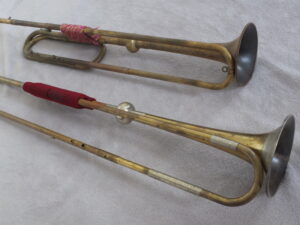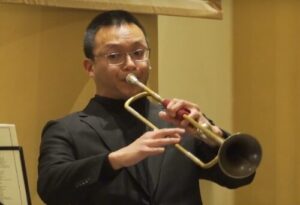Today we would like to talk about two things: first is to address the usage of the terms “natural trumpet” and “baroque trumpet” mentioned in our earlier post, and the second is to show you what type of trumpets Danny uses for Baroque music performance.
Difference between “natural trumpet” and “baroque trumpet”
First, the different terms! As mentioned earlier, there are some people who see “natural trumpet” and “baroque trumpet” as strictly two different things. A “natural trumpet” would basically only be a tube whereas a “baroque trumpet” will have (vented) fingerholes at specific places along the tube. Fingerholes have been found on trumpets which were made as early as the late 1700s, but its use is considered by many to be a modern addition. Its main purpose is to “correct” intonation of the F/F# and A according to what our modern ears are used to.
Let’s go a step back to remind ourselves what is the purpose of using a “baroque/natural” trumpet: It is for HIPP (Historically Informed Performance Practice), which contains two main parts. The first is that a HIPP musician applies the appropriate style and technique from the related era to their performance, and the second is that they use historical instruments (or copies) which matches that era. So, if we are referring to High Baroque music (1680-1750), there are people who would say that a trumpet without holes is the ideal choice.
However, most people nowadays are used to a tuning system called “equal temperament”, where every single note is of equal distance to each other. When trumpets without holes are used in performance, it is common that people find them “out of tune”, as some notes go too far away from the equal temperament system.
Below is a video where you can have a listen to the different trumpet setups.
So how is it possible to make the trumpet without holes work? Of course, excellent technique is required to move the note as close as possible to the desired intonation, but the trumpeter also needs support from the ensemble/conductor with whom they are playing with. The ensemble/conductor needs to understand those “problem” notes, and have to be willing to experiment with tuning systems to find a way to match the trumpet. However, this kind of support is rare in certain regions, which is why some people find more success with using fingerholes.
It is always a good idea to practice to be able to play on both trumpets with and without holes. That way it is possible to be flexible and adapt to the situation to serve music in the best way possible.
Phew that was pretty long, and now we go on to introducing Danny’s trumpets!
Baroque trumpets
MG Trumpets, Golden Ratio Modular+, 2019
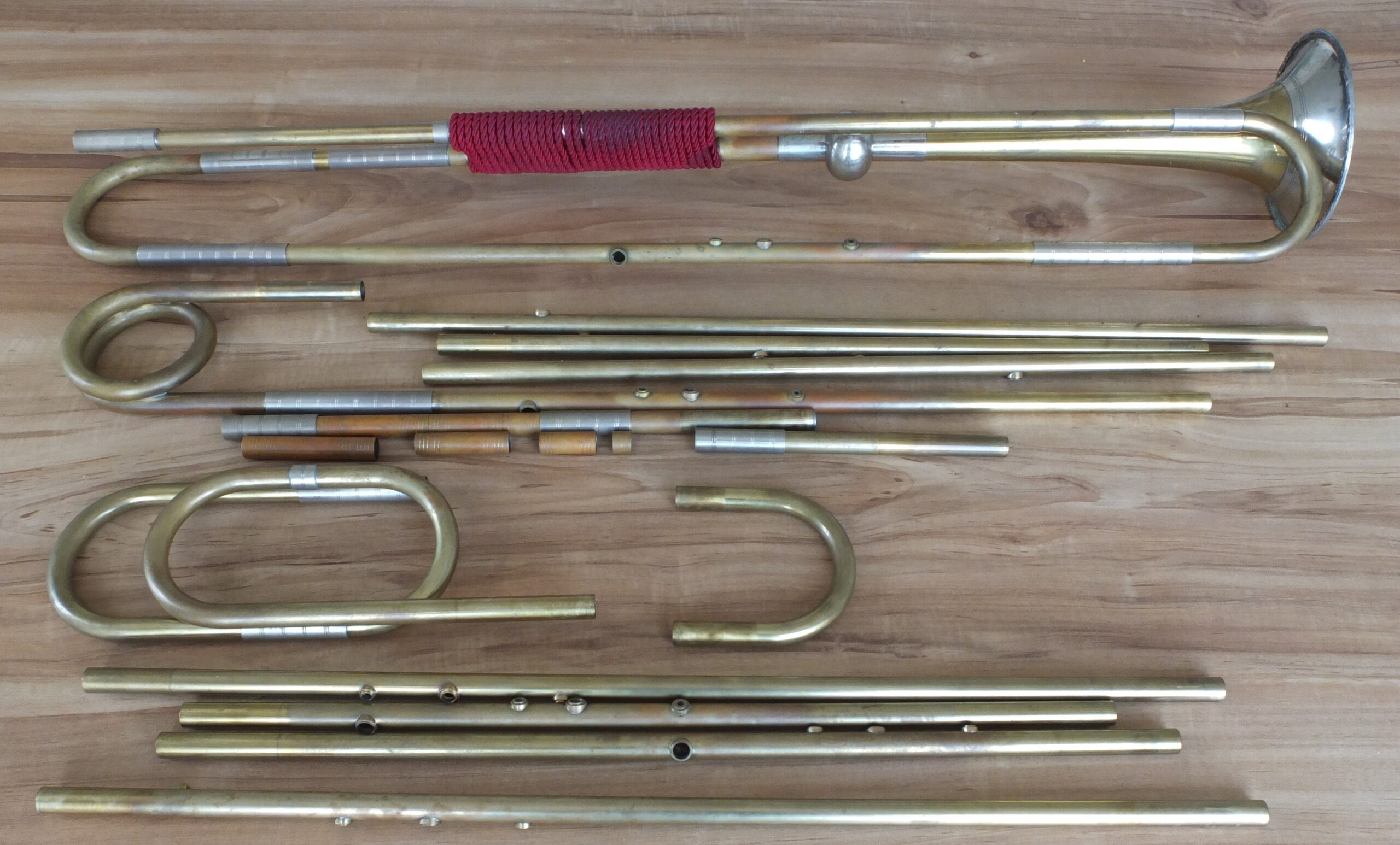 This is Danny’s main axe, made by Mark Geelen. Mark’s design is a beautiful answer to the high level of performing requirements asked of trumpeters nowadays, and allows for an authentic sound for historical playing. By changing parts, this trumpet can play both with or without holes in all pitches, really well. Right now Danny has the possibility of playing the trumpet in the following keys: 415Hz (Bb, C, D), 430Hz (Bb, C, D), 440Hz (Bb, C, D).
This is Danny’s main axe, made by Mark Geelen. Mark’s design is a beautiful answer to the high level of performing requirements asked of trumpeters nowadays, and allows for an authentic sound for historical playing. By changing parts, this trumpet can play both with or without holes in all pitches, really well. Right now Danny has the possibility of playing the trumpet in the following keys: 415Hz (Bb, C, D), 430Hz (Bb, C, D), 440Hz (Bb, C, D).
David Staff, J. L. Ehe III 1746 Natural Trumpet in F copy, 2016 (original J. L. Ehe 1746, Germanisches Nationalmuseum, Nuremberg)
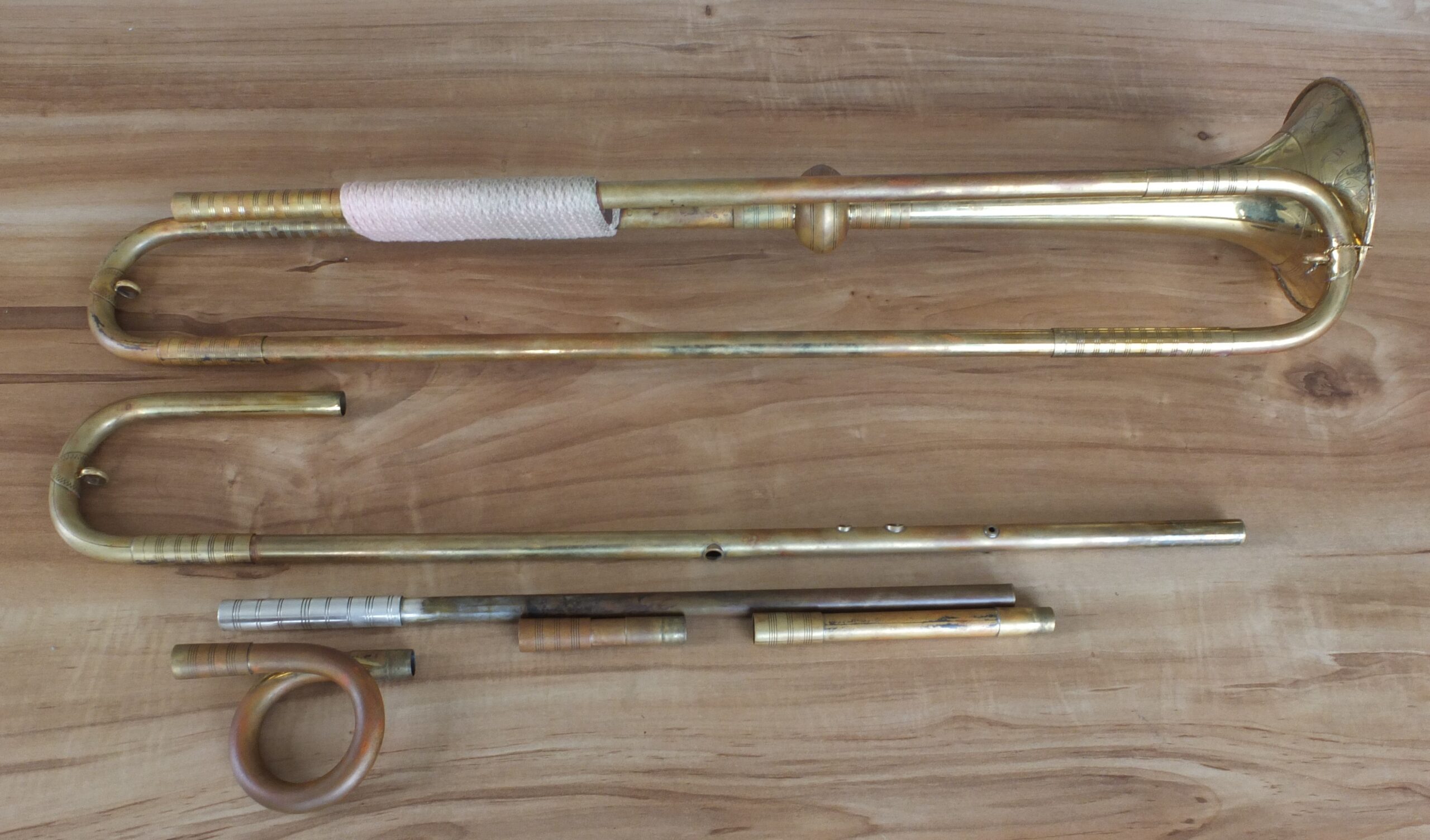 This trumpet can be played in 440Hz (Eb, E, F), 430Hz (Eb, E, F), 415Hz (Eb, E, F). It is mainly used for Classical orchestral playing, and Danny also uses this to practice the Brandenburg 2nd concerto, which is still an ongoing project.
This trumpet can be played in 440Hz (Eb, E, F), 430Hz (Eb, E, F), 415Hz (Eb, E, F). It is mainly used for Classical orchestral playing, and Danny also uses this to practice the Brandenburg 2nd concerto, which is still an ongoing project.
Michael Münkwitz, Riedel 3-hole, 2011 (original J. C. Riedel, Dresden 1752, Musikinstrumentenmuseum Leipzig)
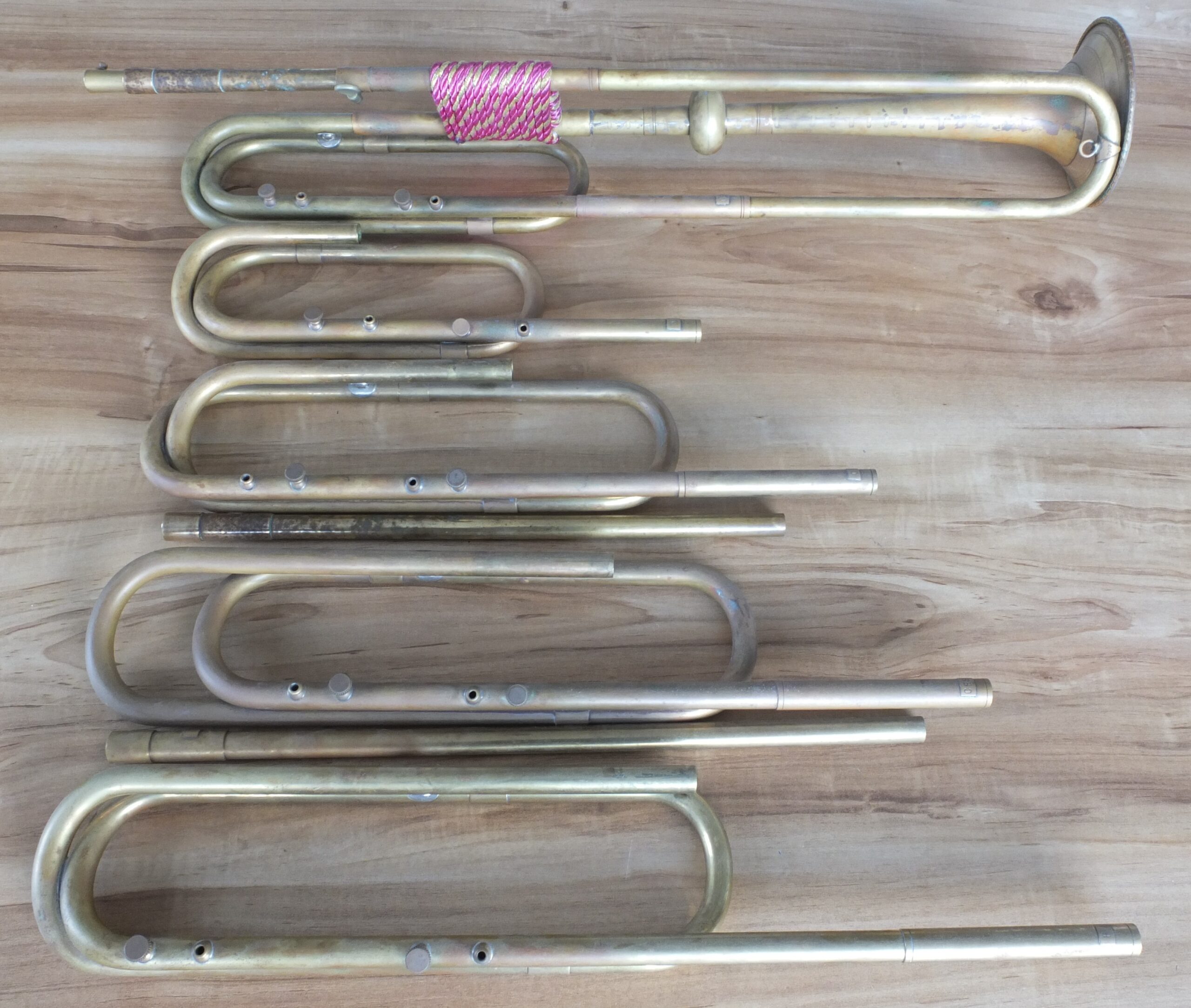 This is the first baroque trumpet Danny bought, which he actually found in a friend’s shop in Singapore, just before he transferred schools to the Hague. Talk about a coincidence! Danny used it for the whole of his studies, which worked really well for Baroque music. For Classical playing it was limiting, as it was not designed to play in 430Hz. That is why Danny upgraded to the Modular+ trumpet made by Mark.
This is the first baroque trumpet Danny bought, which he actually found in a friend’s shop in Singapore, just before he transferred schools to the Hague. Talk about a coincidence! Danny used it for the whole of his studies, which worked really well for Baroque music. For Classical playing it was limiting, as it was not designed to play in 430Hz. That is why Danny upgraded to the Modular+ trumpet made by Mark.
Flatt trumpet
Nathaniel wood, Flatt trumpet after Talbot/Bull/Tomes, 2020
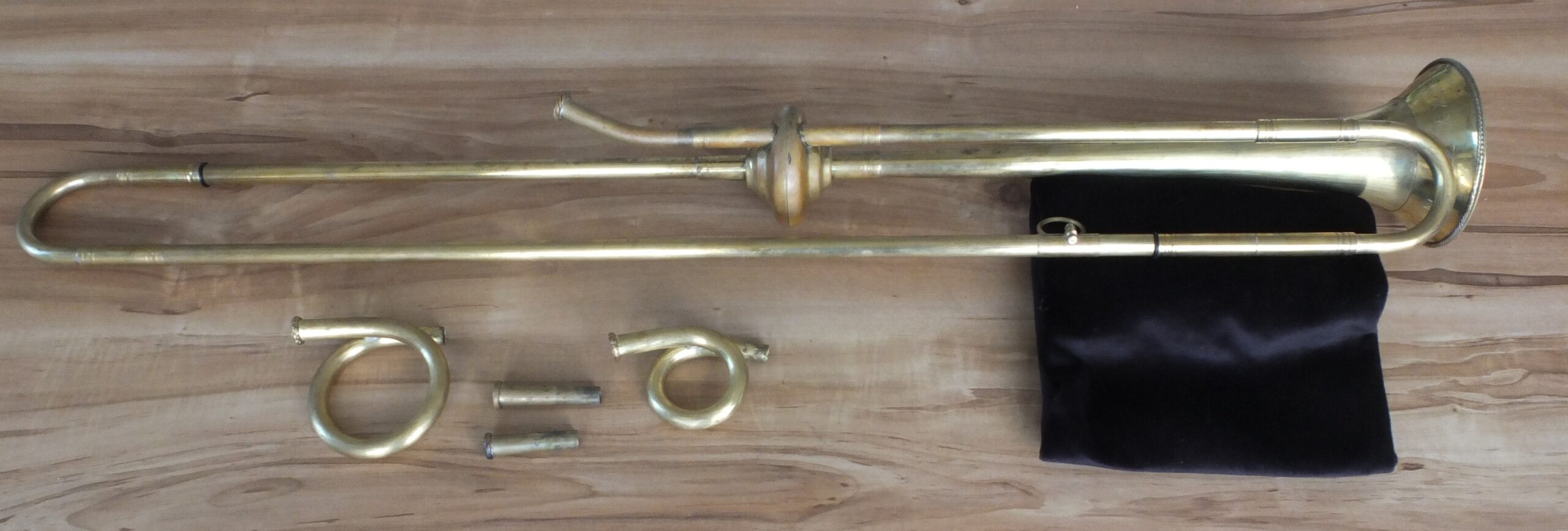 A Flatt trumpet is a type of slide trumpet, and its documented use is mainly in English music. Unfortunately we have no surviving original examples of the Flatt trumpet, except for the fact that we have music written for it (like Purcell’s Funeral Music for Queen Mary) and James Talbot’s description and measurements of the instrument in his papers. As Talbot’s measurements alone do not work, Nathaniel built this trumpet based on the late Frank Tomes’ design and also taking measurements from other contemporary instruments like the ones made by Bull. Danny uses this trumpet also for Bach cantatas, where Bach asks for a trumpet with a slide (marked tromba/corno da tirarsi).
A Flatt trumpet is a type of slide trumpet, and its documented use is mainly in English music. Unfortunately we have no surviving original examples of the Flatt trumpet, except for the fact that we have music written for it (like Purcell’s Funeral Music for Queen Mary) and James Talbot’s description and measurements of the instrument in his papers. As Talbot’s measurements alone do not work, Nathaniel built this trumpet based on the late Frank Tomes’ design and also taking measurements from other contemporary instruments like the ones made by Bull. Danny uses this trumpet also for Bach cantatas, where Bach asks for a trumpet with a slide (marked tromba/corno da tirarsi).


